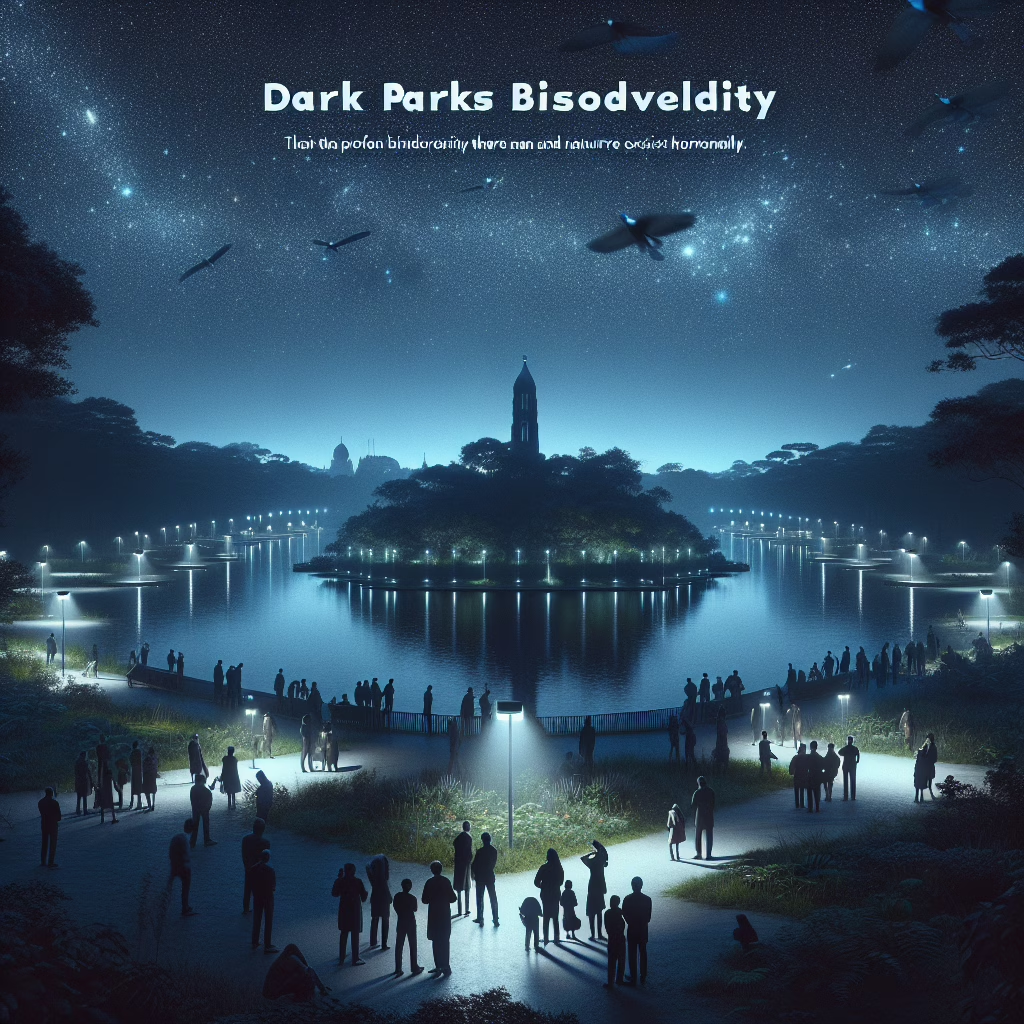In a world where light pollution competes with the stars, the concept of dark parks emerges as a beacon of hope for biodiversity and a tech-savvy approach to environmental protection. Imagine stepping into a serene, starry night where the glow of city lights doesn’t drown out the beauty of nature. This is not just a dream—it’s an initiative gaining traction in 2025!
What Exactly Are Dark Parks?
Dark parks are those magical places where artificial light takes a backseat, allowing nature to shine (literally). They provide habitats for wildlife that thrive in darkness, like owls and nocturnal insects, all while giving humans the chance to reconnect with the cosmos above. Who knew that taking a walk under the stars could be so beneficial for both people and critters?
In addition to being a visual treat, dark parks offer ecological benefits that make Mother Nature smile. By reducing light pollution, these parks contribute to healthier ecosystems. Many species rely on natural cycles of light and dark; when we dim our lights, we help maintain these essential rhythms. Studies show that the restoration of darker skies leads to improved biodiversity.
The Technology Behind Dark Parks
Believe it or not, technology plays a crucial role in creating these dark havens. Smart lighting systems can be programmed to adjust brightness based on the time of day or even weather conditions! Imagine walking through a park and having lights dim automatically as the sun sets—now that’s what I call intelligent design! By utilizing solar-powered lights that are motion-sensitive, park managers can enhance visitor experiences while keeping light pollution to a minimum. This integration of technology not only preserves our night skies but also promotes sustainability.
Furthermore, innovative apps can guide stargazers to optimal viewing spots within these parks. Who needs a telescope when you have GPS? It’s like having your own personal stargazing assistant right in your pocket! These technological advancements not only empower visitors but also foster a deeper appreciation for the night sky.
The Ecological Impact of Dark Parks
Now, let’s dig into why dark parks are more than just pretty places to take selfies (though they do make for fantastic Instagram posts). The preservation of wildlife is at the forefront of this initiative. Many animals use natural light cues for mating, feeding, and navigation. When we crank up the brightness on our city streets, it can lead to confusion for these creatures, disrupting their natural behaviors.
Research shows that areas with reduced light pollution see increased biodiversity. Insects flourish under darker skies, which in turn supports birds and other predators. So while you’re enjoying your evening stroll through a dark park, remember—you’re also playing a part in supporting nature’s delicate web. This harmony between nature and humanity is essential for preserving our environment.
The Social Benefits of Dark Parks
Let’s not forget about us humans! Dark parks provide a unique opportunity for community engagement and education. Picture this: families gathering for educational events about the night sky or local wildlife—where kids get to learn about constellations while their parents try to remember which one is Orion.
These parks can become hubs of social activity where people come together for moonlit yoga sessions or guided nighttime hikes. Not only do we get fit under the stars, but we also foster connections with our neighbors—and isn’t that just wholesome? Activities like stargazing workshops or nocturnal wildlife tours can enrich community bonds and promote teamwork among participants.
The Future of Dark Parks
As we move further into 2025, the trend toward establishing dark parks is likely to grow stronger. With increasing awareness about environmental issues and health impacts related to light pollution, more communities will rally behind this cause. The acknowledgment of the adverse effects of artificial lighting on health continues to rise, leading citizens to advocate for change.
Local governments might even start offering incentives for creating dark park initiatives—perhaps tax breaks for municipalities that reduce their lighting footprint? It could become as trendy as those eco-friendly reusable bags! The exciting part? Dark parks aren’t just limited to rural areas; urban settings can benefit too! City planners might find ways to incorporate dark zones amidst bustling metropolises where residents can escape from their daily hustle and bustle.
A Call to Action
If you’re passionate about protecting our planet and love starry nights as much as I do, consider advocating for dark parks in your community! Engage with local officials and express support for initiatives that prioritize reducing light pollution. Educational campaigns and community workshops can rally support and inform others about the proven ecological benefits of dark parks.
Who knows? Maybe one day you’ll find yourself basking under a sky filled with stars—and you’ll have played a part in making it happen! So what do you think? Are you ready to embrace dark parks and all they have to offer? Let’s hear your thoughts!

